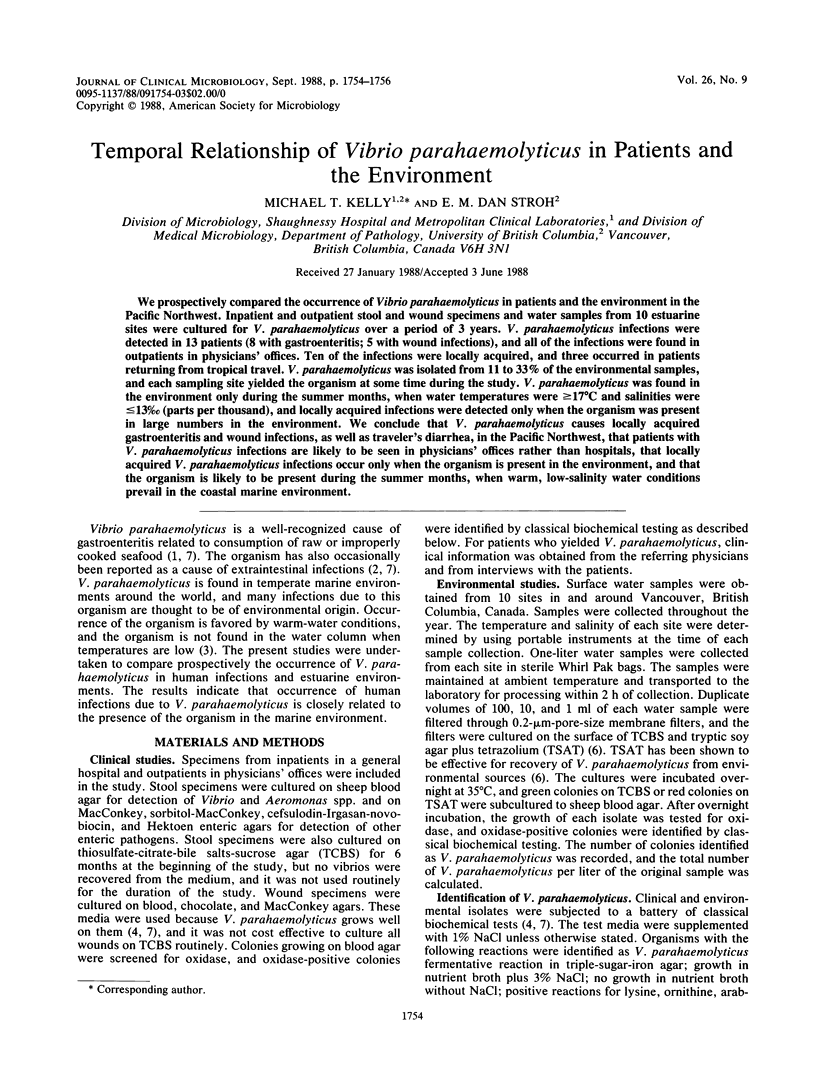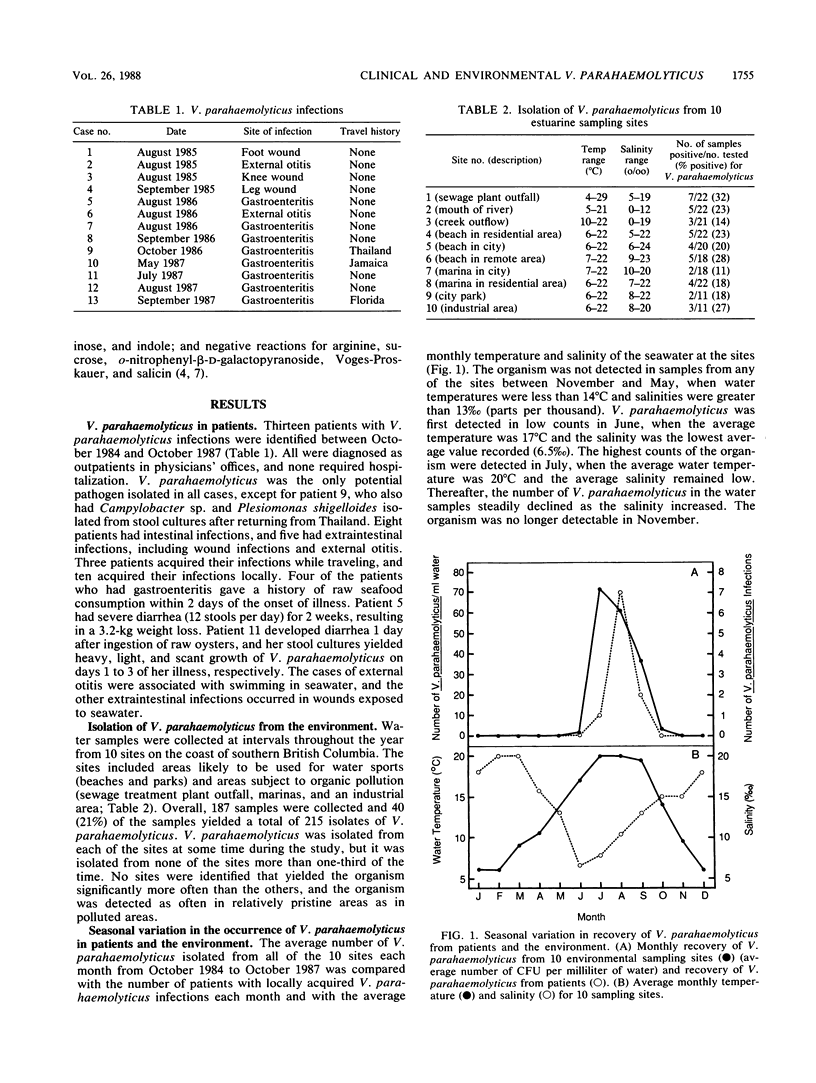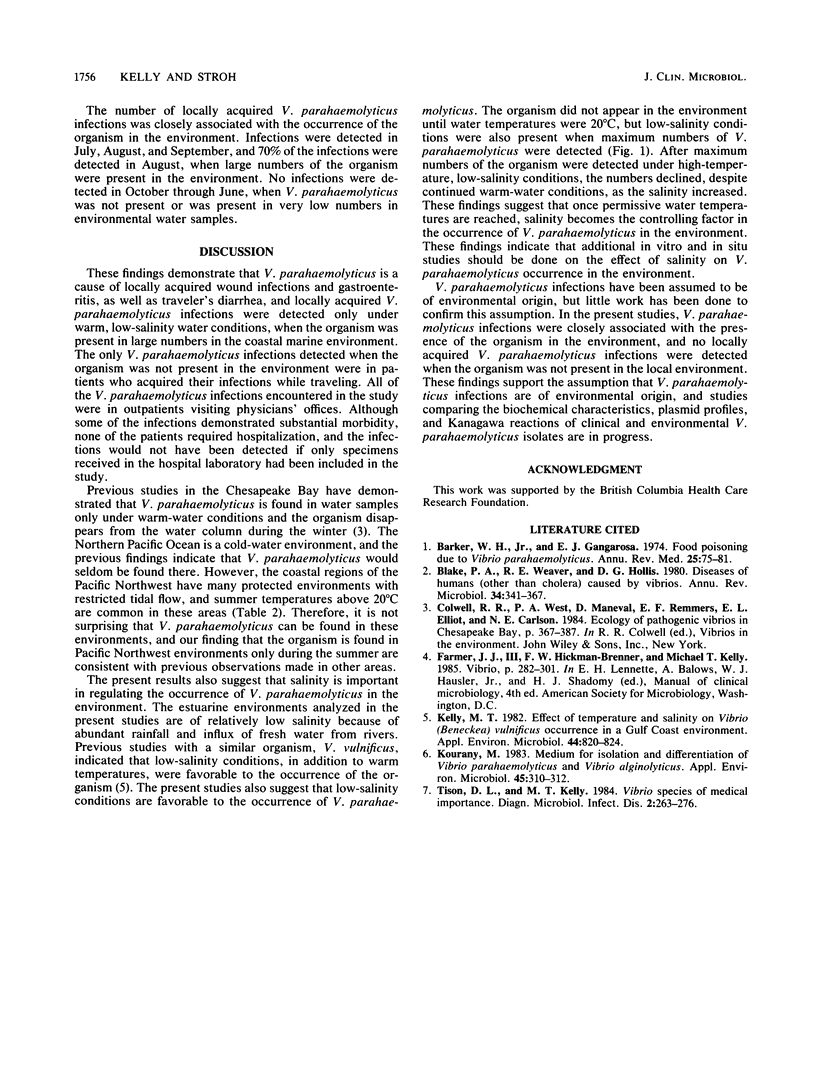Abstract
We prospectively compared the occurrence of Vibrio parahaemolyticus in patients and the environment in the Pacific Northwest. Inpatient and outpatient stool and wound specimens and water samples from 10 estuarine sites were cultured for V. parahaemolyticus over a period of 3 years. V. parahaemolyticus infections were detected in 13 patients (8 with gastroenteritis; 5 with wound infections), and all of the infections were found in outpatients in physicians' offices. Ten of the infections were locally acquired, and three occurred in patients returning from tropical travel. V. parahaemolyticus was isolated from 11 to 33% of the environmental samples, and each sampling site yielded the organism at some time during the study. V. parahaemolyticus was found in the environment only during the summer months, when water temperatures were greater than or equal to 17 degrees C and salinities were less than or equal to 13% (parts per thousand), and locally acquired infections were detected only when the organism was present in large numbers in the environment. We conclude that V. parahaemolyticus causes locally acquired gastroenteritis and wound infections, as well as traveler's diarrhea, in the Pacific Northwest, that patients with V. parahaemolyticus infections are likely to be seen in physicians' offices rather than hospitals, that locally acquired V. parahaemolyticus infections occur only when the organism is present in the environment, and that the organism is likely to be present during the summer months, when warm, low-salinity water conditions prevail in the coastal marine environment.
Full text
PDF


Selected References
These references are in PubMed. This may not be the complete list of references from this article.
- Barker W. H., Jr, Gangarosa E. J. Food poisoning due to Vibrio parahaemolyticus. Annu Rev Med. 1974;25:75–81. doi: 10.1146/annurev.me.25.020174.000451. [DOI] [PubMed] [Google Scholar]
- Blake P. A., Weaver R. E., Hollis D. G. Diseases of humans (other than cholera) caused by vibrios. Annu Rev Microbiol. 1980;34:341–367. doi: 10.1146/annurev.mi.34.100180.002013. [DOI] [PubMed] [Google Scholar]
- Kelly M. T. Effect of temperature and salinity on Vibrio (Beneckea) vulnificus occurrence in a Gulf Coast environment. Appl Environ Microbiol. 1982 Oct;44(4):820–824. doi: 10.1128/aem.44.4.820-824.1982. [DOI] [PMC free article] [PubMed] [Google Scholar]
- Kourany M. Medium for isolation and differentiation of Vibrio parahaemolyticus and Vibrio alginolyticus. Appl Environ Microbiol. 1983 Jan;45(1):310–312. doi: 10.1128/aem.45.1.310-312.1983. [DOI] [PMC free article] [PubMed] [Google Scholar]
- Tison D. L., Kelly M. T. Vibrio species of medical importance. Diagn Microbiol Infect Dis. 1984 Sep;2(4):263–276. doi: 10.1016/0732-8893(84)90057-9. [DOI] [PubMed] [Google Scholar]


